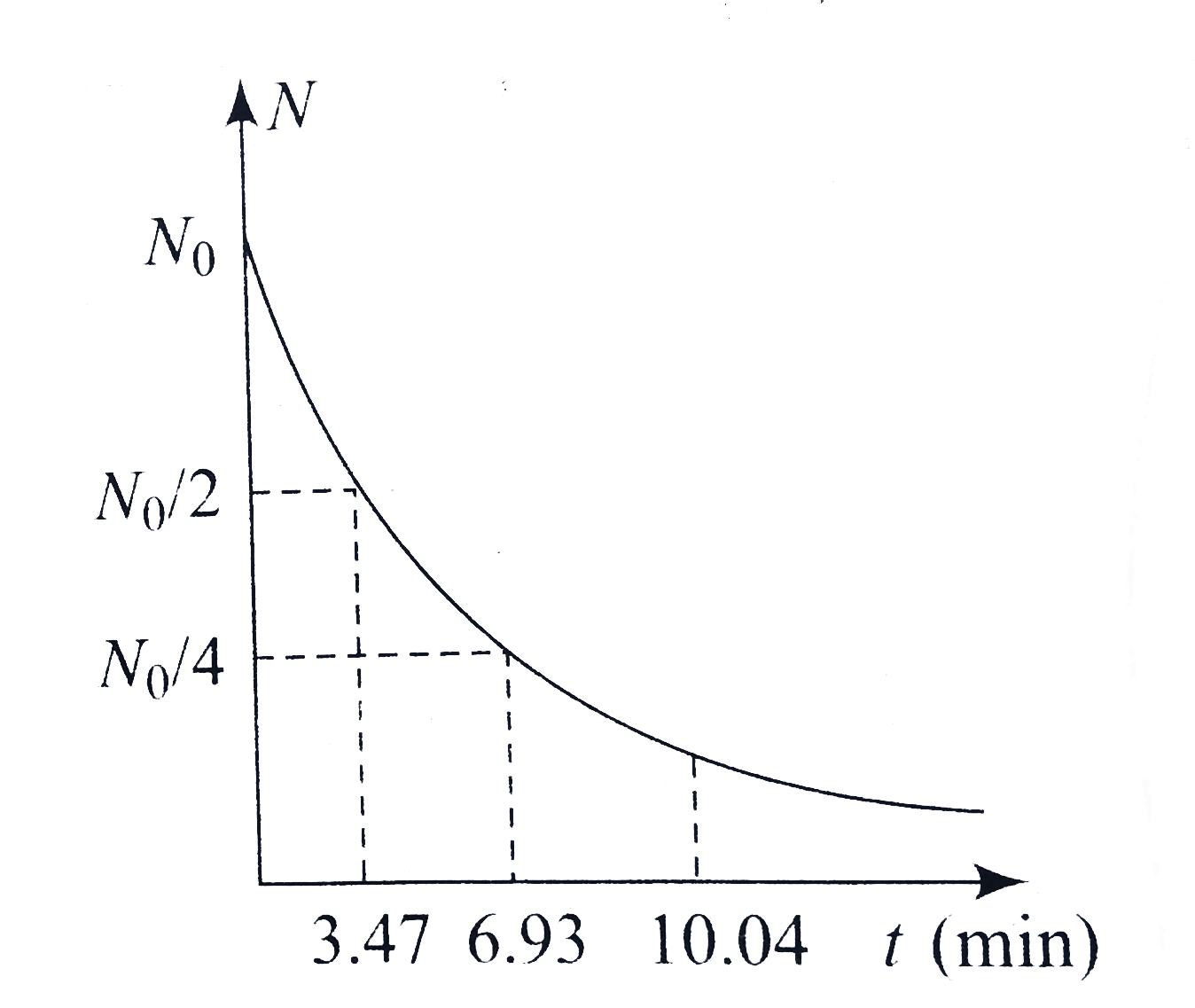A radioactive substance has a half-life of 64.8 h. A sample containing this isotope has an initial activity (t=0) of 40μCi. Calculate the number of nuclei that decay in the time interval between t1=10.0h and t2=12.0h.
The correct Answer is:A, C, D
R0=λN0⇒N0=R0λ
where, λ=In2t1/2
N=N0e−λt
Find N1=N0e−λt1
and N2=N0e−λt2
∴ Number of nuclei decayed in given
time =N1−N2
Topper's Solved these Questions
- MODERN PHYSICS - 2BOOK - DC PANDEYCHAPTER - MODERN PHYSICS - 2EXERCISE - Exercise 34.2
9 Videos
- MODERN PHYSICS - 2BOOK - DC PANDEYCHAPTER - MODERN PHYSICS - 2EXERCISE - Assertion And Reason
11 Videos
- MODERN PHYSICS - 2BOOK - DC PANDEYCHAPTER - MODERN PHYSICS - 2EXERCISE - Miscellaneous Examples
9 Videos
- MODERN PHYSICS - 1BOOK - DC PANDEYCHAPTER - MODERN PHYSICS - 1EXERCISE - Level 2 Subjective
23 Videos
- NUCLEIBOOK - DC PANDEYCHAPTER - NUCLEIEXERCISE - C MADICAL ENTRANCES GALLERY
46 Videos
Similar Questions
(a) A radioactive sample has 6.0×1018 active nuclei at a certain instant. How many of these nuclei will still be the same active state after two half-lives?
(b) Radioactive phosphours−32 has a half-life of 14 days. A source containing this isotope has an initial activity of 10μCi.
(i) What is the activity of the source after 42 days?
(ii) What time elapse before the activity of the source falls at 2.5μCi?
(c) 1g of a radioactive substance disintergrates at the rate of 3.7×1010dps. The atomis mass of the substance is 226. Calculate its mean life.
View SolutionA radioactive substance has half-life T12 and number of radioactive nuclides present initially was N0. What is the number of radioactive nuclides at time t ?
View Solution
Knowledge Check
Half-life period of a radioactive substance is 6h. After 24h activity is 0.01μC, what was the initial activity ?
A0.04μCB0.08μCC0.24μCD0.16μCA radioactive sample undergoes decay as per the following gragp. At timet=0, the number of undecayed nuclei is N0. Calculate the number of nuclei left after 1h.
 .AN0/e8BN0/e10CN0/e12DN0/e14
.AN0/e8BN0/e10CN0/e12DN0/e14Two radioactive substances have half-lives T and 2T. Initially, they have equal number of nuclei. After time t=4T, the ratio of their number of nuclei is x and the ratio of their activity is y. Then,
A(a) x=1/8B(b) x=1/4C(c) y=1/2D(d) y=1/4
Radioactive 138I has a half-life of 8.0 days .A sample containing 138I has activity 20μCiat t=0.(a) What is its activity at t=4.0 days?(b) What is its decay constant at t=4.0 days?
View SolutionA radioactive substance has a half-life of h days. Find a formula for its mass m in terms of time t if the initial mass is m0. What is its initial decay rate?
View SolutionThe radionuclide 64Cu has a half-life of 12.7 h. If a sample contains 5.50 g of initially pure 64Cu at t = 0, how much of it will decay between t=14.0handt=16.0h?
View SolutionHalf-life of a radioactive substance is T. At time t_1 activity of a radioactive substance is R1 and at time t2 it is R2. Find the number of nuclei decayed in this interval of time.
View SolutionA radioactive isotope X has a half life of 3 seconds. At t=0, a given sample of this isotope contains 8000atom. Calculate (i) its decay constant (ii) average time (iii) the time t1, when 1000 atoms of the isotope X remain in the sample (iv) number of decay/sec in the sample at t=t1sec.
View Solution
